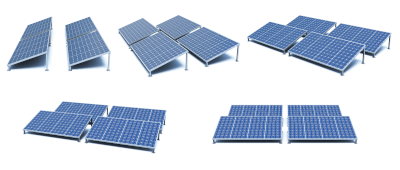What Is a Solar Generator?

A solar generator is a power generation device that converts the sun’s light energy into electricity.
Unlike thermal power generation using fossil fuels, it is a renewable energy source with no risk of energy depletion and produces clean power without emitting greenhouse gases during generation.
While thermal, hydroelectric, nuclear, wind, and other types of power generators generate electricity by rotating turbines and other equipment to drive generators, solar generator use solar cells to convert sunlight directly into electricity.
There are two types of solar generator, grid-connected and stand-alone, and the system configuration differs depending on the type of use.
Uses of Solar Generator
Solar generators are becoming increasingly popular in various locations as a low-carbon power generation device that does not emit greenhouse gases and as a next-generation power generation device that will improve energy self-sufficiency in resource-poor Japan.
Solar generators are being used on a variety of scales and in a variety of applications, including large-scale equipment that sells all electricity generated by solar power generation as a business. They are also used for household equipment that normally consumes its own electricity and sells it to the power company when power generated exceeds power consumption. Also small-scale equipment that is not connected to power company distribution lines and provides power for traffic signs, streetlights, etc. They are used on a variety of scales and in a variety of applications.
Principle of Solar Generator
The most important part of a solar generator is the photovoltaic cell.
Currently, silicon solar cells are the most common type of photovoltaic cell, with a structure consisting of a p-type semiconductor and an n-type semiconductor junction.
When sunlight strikes the p-n junction semiconductor, the electrons in the semiconductor are excited by the light energy and become free electrons. After the free electrons leave, a positive charge, a hole, is generated, and the hole moves to the p-type semiconductor, while the free electron moves to the n-type semiconductor. This is the principle of operation of a photovoltaic cell.
The configuration of solar generator differs between the grid-connected type, which is connected to the power company’s distribution line network, and the stand-alone type, which is not connected to the grid.
Grid-connected solar generator consist of solar module, which is a package of solar cells, a power conditioner that converts the DC power generated by the solar module into AC power, a step-up transformer that raises the output voltage of the power conditioner to the voltage of the power company’s distribution line network, and a power meter that measures the amount of power bought and sold to and from the power company. The system consists of a watt-hour meter that measures the amount of electricity sold and purchased with the power company.
Stand-alone solar power generation equipment consists of solar cell modules and connection circuits. If the power is supplied to an AC load, such as a fluorescent lamp, an inverter circuit must be inserted before connecting it to the load; if the power is supplied to a DC load, such as an LED, the DC power generated by the solar cells is supplied directly.
Photovoltaic Panels Account For About 47% Of the Cost of a Photovoltaic Installation.
Photovoltaic panels account for about 47% of the cost of a photovoltaic power generation system, with installation costs closing in at 28%.
Breakdown (2100 USD)
- Solar panels: 900 USD
- Installation cost: 500 USD
- Power conditioner: 300 USD
- Frame: 250 USD
- Others: 150 USD